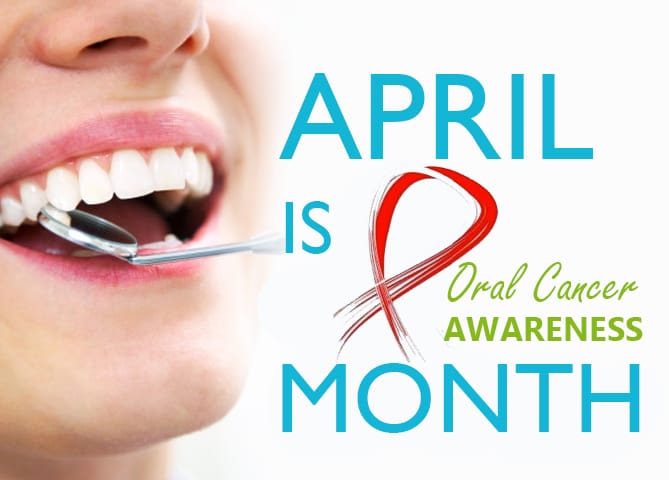In honor of Oral Cancer Awareness Month, we wanted to educate you on early detection strategies for oral cancer. Approximately 43,250 people in the U.S. will be newly diagnosed with oral cancer this year, according to the Oral Cancer Foundation. Low public awareness leads to higher mortality rates, since it is usually detected in the later stages. Early detection can prevent the spread of cancer, which would increase the survivability of oral cancer. At the current rate of infection, it kills roughly one person per hour, 24 hours a day.

Risk Factors
Smoking and tobacco use are the major risk factors of oral cancer. The combination of heavy alcohol consumption with tobacco use makes the development of oral cancer 15 times more likely than those who abstain.
Age is also often considered a risk factor since it occurs most frequently in people over 40, however the fastest growing segment of the population that is being diagnosed with oral cancer are nonsmokers under the age of 50.
Certain strands of the human papilloma virus (HPV) can cause various types of oral cancer, however, out of 200 strands of HPV, only nine are strongly associated with the risk for cancer.
Signs and Symptoms
The sensitivity of your mouth makes oral cancer difficult to detect in its early stages. Generally, you want to look for white or red patches in your mouth, or a small ulcer similar to a canker sore. If an abrasion in your mouth doesn’t heal after 14 days, it is best to see a dentist for a screening.
Common symptoms of oral cancer or pre-cancerous cells include:
- A change in the way the teeth fit together
- A color change in the oral tissues
- A tiny white or red spot/sore anywhere in the mouth
- Any sore that bleeds easily or refuses to heal
- Difficulty chewing, swallowing, speaking or moving the jaw or tongue
- Lumps, thickenings, rough spots, or crusty areas
- Pain, tenderness, or numbness anywhere in the mouth or on the lips
Early Detection is Key
Early discovery of mouth cancer can increase life spans, reduce the number of treatments, and greatly increase quality of life post-diagnosis. That is why we provide oral cancer screenings at Kristen Ritzau, DDS.
We use ViziLite to aid with early detection. Patients rinse their mouth with toluidine blue, and we use a specialized light to identify cancerous or precancerous abnormalities. The dye and light cause abnormal lesions to glow white for easier detection. We then do a scrape test on any abnormal-looking lesions to test for cancerous and precancerous cells.
We certainly aren’t looking to scare you. Although it’s important to be aware of oral cancer, keep in mind that in the U.S. it constituted 2.4% of cancer diagnoses in 2009.
Early detection can decrease the mortality rate of oral cancer. Schedule an appointment with Dr. Ritzau today and ask for an oral cancer screening.
